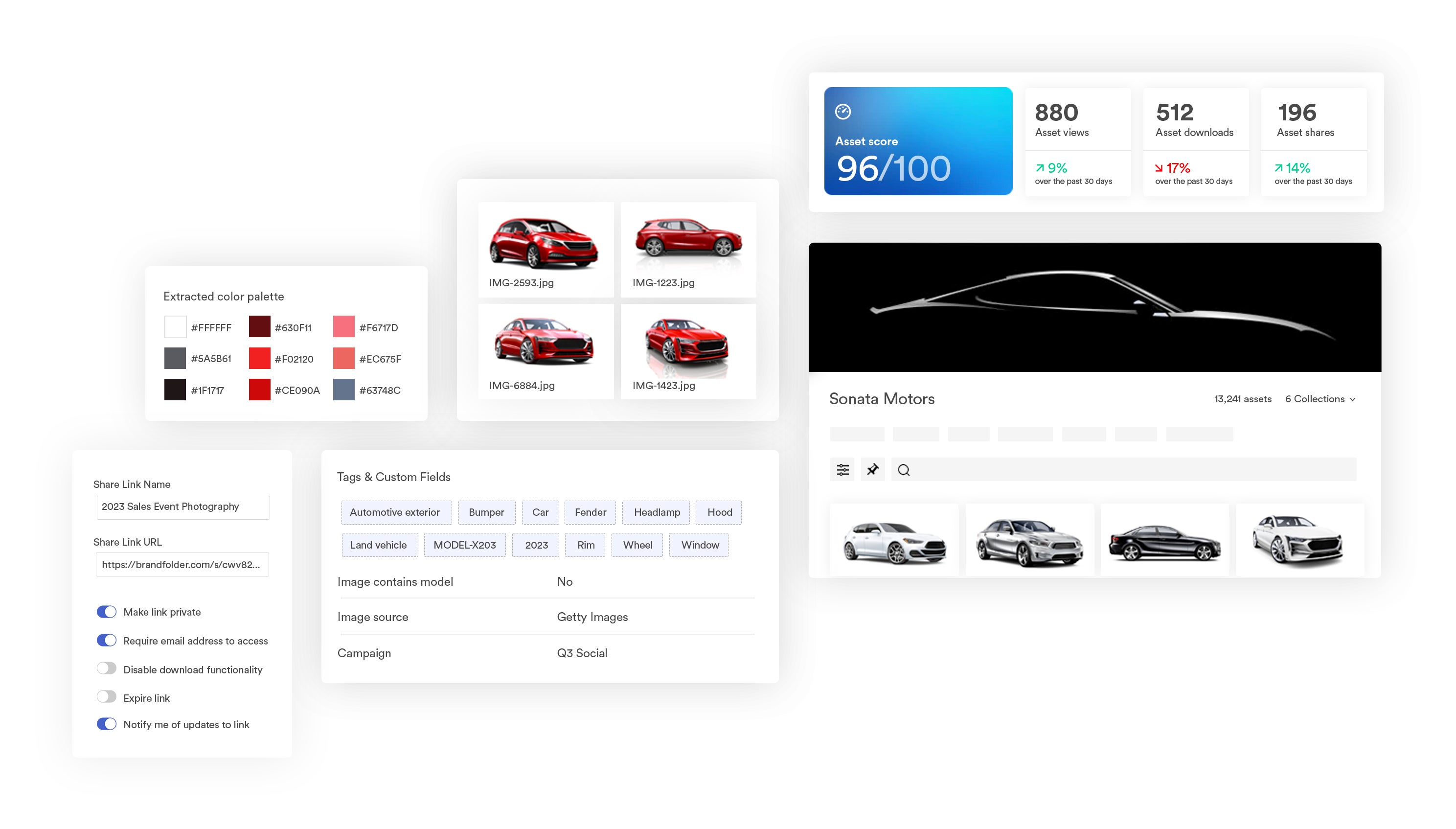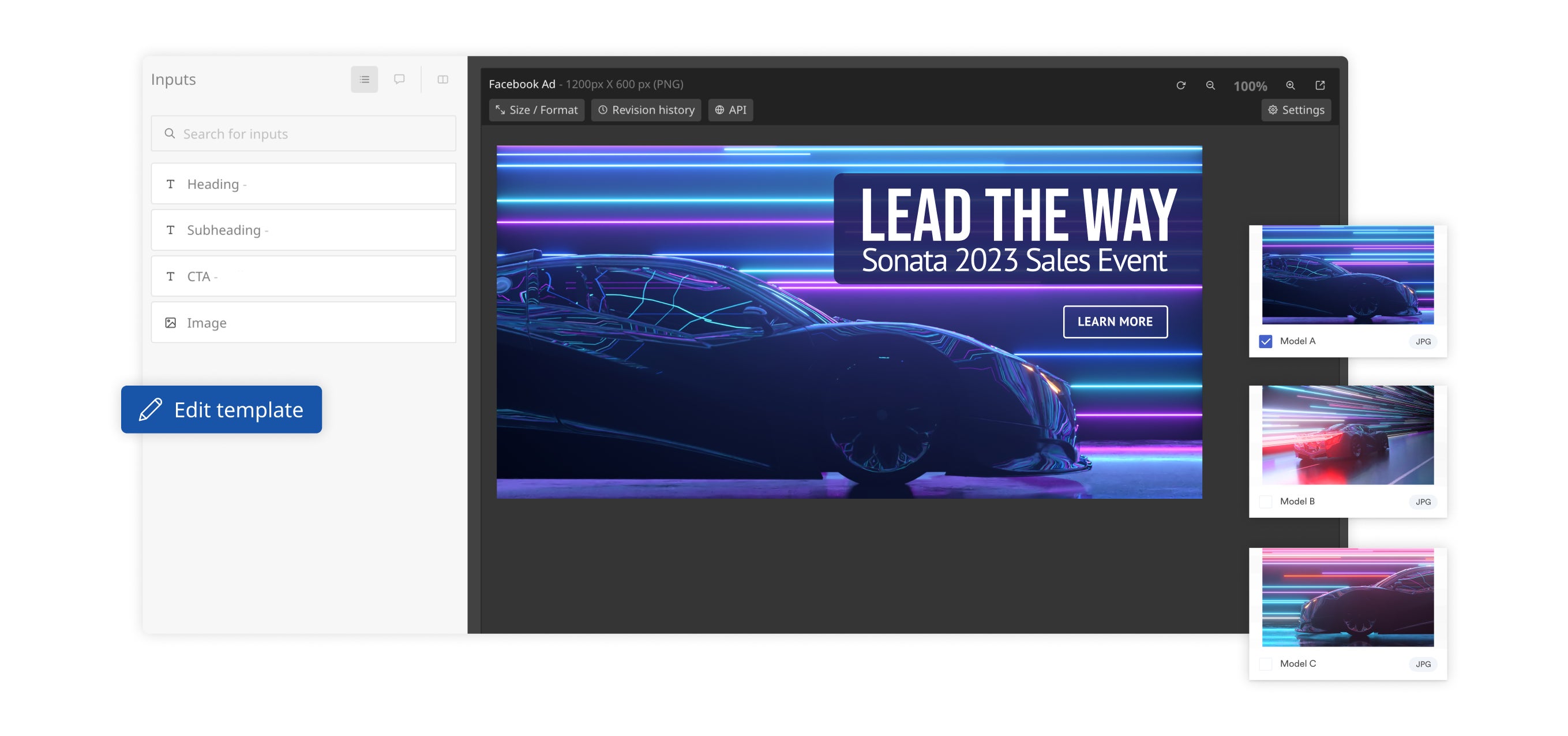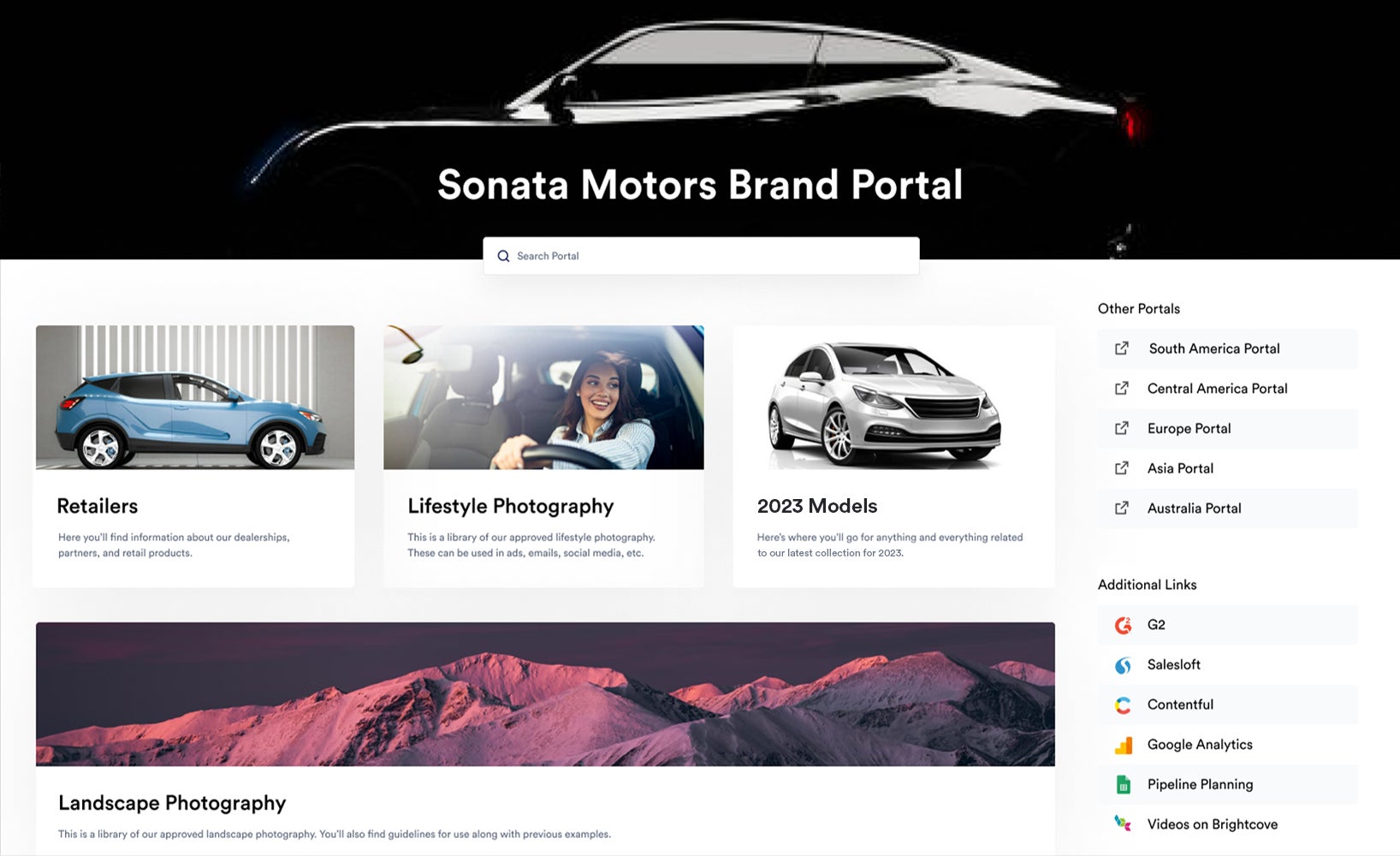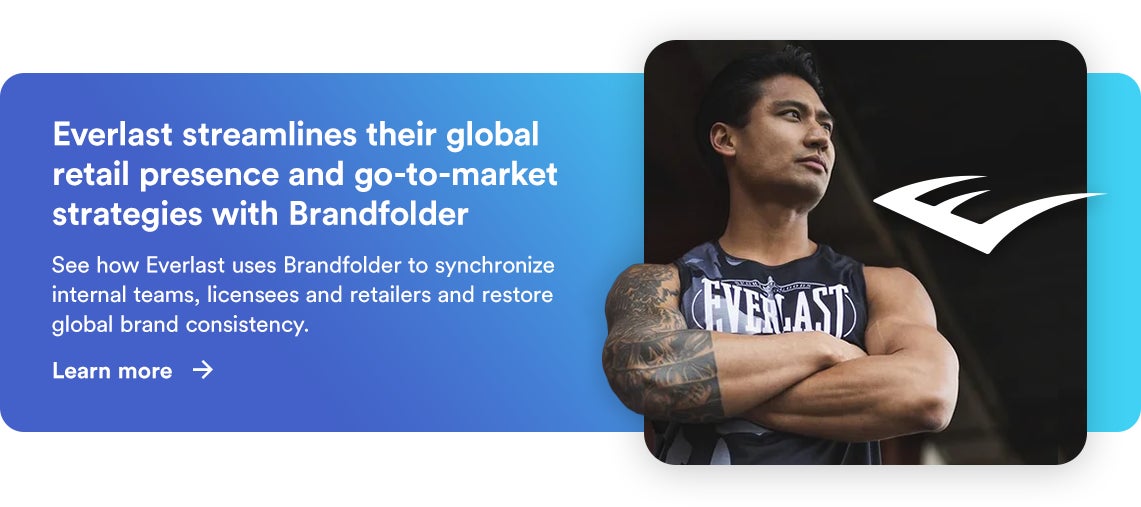- What are the core differences between DAM software and a tool like Google Drive or Dropbox?
- What features can you find in DAM software?
- Who typically uses DAM software?
- Why is DAM software helpful for eCommerce brands, specifically?
- How secure is DAM software? What security features are offered?
- How much does digital asset management software cost?
- How do I find the best DAM for my eCommerce business?
- Get Started with the Right Solution
Get branding tips and expert advice delivered straight to your inbox.
eCommerce brands typically consider two software categories when shopping for cloud storage solutions: traditional cloud storage services (including well-known names like Google Drive, Microsoft One Drive, Dropbox, and Box…) and digital asset management software (like us, Brandfolder). In a lot of cases, teams start with the former and upgrade to the latter.
However, we’d say — and we’ve made this argument before — that business users, like eCommerce teams, are better to invest in DAM software from the get-go and upgrade the solution as operations scale. We say this for a few reasons:
- Cloud storage solutions are cost-friendly and easy to use, but they offer exactly what the name suggests: cloud storage. They give you a place to keep your content, and they support online sharing, but these solutions don’t have features to actually manage brand assets — and that’s what business users need to make effective use of brand collateral.
- eCommerce brands are tasked with organizing, distributing, and monitoring important business collateral like website imagery, product documentation, technical spec sheets, sales collateral, promotional content, etc. — all of which need to be current, accurate, and consistent (for internal teams, partners and customers who engage with your brand). So, to be blunt, cloud storage features just don’t cut it, and that’s why DAM is the recommended storage solution for businesses with brand collateral.
- Most teams find themselves in a position where they need to upgrade anyway — but once they’re in that position, they’re experiencing issues (like disorganization or poor brand management) with traditional cloud storage services. So then they’re tasked with cleaning up the mess in their existing storage solution and migrating everything to a new platform. You can avoid the common issues with cloud storage and make the transition to DAM easier by getting set up with the right solution early on.
So in this post, we address FAQs about cloud storage providers and explain why DAM is the better solution for eCommerce businesses — specifically, how it supports brand assets, operational flows, and business goals.
You can also learn more about digital asset management features and Brandfolder’s offerings by scheduling a free demo with our team. We can discuss the options you’re considering and what you need from a cloud storage solution to set you up for success.
What are the core differences between DAM software and a tool like Google Drive or Dropbox?
These two solutions have dozens of differences, but we can summarize the key ones by focusing on functionality, usability, and scalability.
DAMs offer greater functionality.
As we mentioned above, cloud storage services only offer a few features to manage content. You can store content in a central hub and send it to other users, teams, or partners. Some of these tools, like Dropbox, offer ways to track sharing, but those reporting features are typically pretty basic.
Something else worth mentioning: cloud storage services don’t usually accept all file types. If teams work with uncommon file formats or need to store 3D product renders, templates, or large video files, they have to use multiple storage solutions. This makes it even harder for team members to locate content and brand managers to maintain consistency.
On the flip side: DAMs offer storage for hundreds of file formats, secure online sharing features, and they give you tools to oversee the entire asset lifecycle — you can manage creative content production, control the content that lives in DAM, manage updates to existing files, share digital assets with the teams that need content, set expirations for content, and more.

The additional features provided by digital asset management software are critical to eCommerce teams and brand managers because they let you:
- Preserve organization in your asset library and keep content up-to-date everywhere it lives.
- Ensure website designers, sales teams, retailers, and other partners can access approved content for their roles — and know how to use it.
- Leverage and improve ROI from existing brand assets.
- Monitor where content is shared and how it is used to uphold brand consistency.
DAMs make it easy to find and use brand collateral, without relying on the design team to support every project.
A lot of users have trouble searching for content in cloud storage solutions (especially when they have thousands of files), so they waste time digging through folders or end up asking another team member to provide the asset.
Then, after users can locate files, they’ll often want to edit content to suit their specific use case — for example, sales teams might be able to access the latest decks or brochures, but they’ll typically want to personalize them with contact info or details specific to their region/branch/location. But cloud storage solutions don’t have design tools to enable that process; so users have to ask designers to make those edits, then wait for the new version of the content, which slows everyone down.
But DAMs address all of those issues with a more user-friendly taxonomy, advanced search features (that search by keywords and metadata instead of file names), and built-in creative tools to optimize and personalize content for new mediums and projects.

DAMs are easily customizable — so you can add storage space, seats, features, and integrations as you go.
As mentioned above, most business users outgrow cloud storage — but DAM software is highly configurable and scalable to adapt to changing business needs. (Once you find the best DAM software for your business, you can stick with the solution and upgrade the software as you grow.)
Most DAMs offer unlimited storage space and user seats, support custom integrations, and provide flexible pricing so they can be “tailored” to unique business requirements. The flexibility of these solutions is what allows small businesses to get started with DAM; they can choose exactly what they need for their current operations (and only pay for what they’re using). And it’s what allows DAM to grow with enterprise teams and international corporations.
Check out our guides below to read more about transitioning to DAM software:
- Digital Asset Management for Small Business: Buyer's Guide
- Five Criteria to Evaluate Enterprise Digital Asset Management Software
- Digital Asset Management Strategy: 10-Step Checklist
What features can you find in DAM software?
Brandfolder offers cloud storage and online sharing, like the names we’ve discussed above, but that’s really the only overlap — and even those features are more advanced in DAM software…
- You have more flexibility when organizing your asset library so you can structure content in cleaner ways.
- DAMs offer easier ways to retrieve files.
- Share links offer more control over content once sent outside the DAM — you can update, add or remove files from links; expire share links on the fly; monitor share link activity.
- You can create Brand Portals to store and share brand assets with specific teams, retailers, agency partners, etc., so they can access content when they need it.
- Everything is trackable in DAM, so you can keep tabs on user activity and see how teams use content in projects.

Then, some of Brandfolder’s extra DAM features that benefit eCommerce teams include:
- AI Brand Intelligence to simplify asset organization, power metadata management, and track asset usage.
- Automation to streamline repetitive tasks and expire content when specified.
- Creative workflow tools to manipulate files for online mediums (e.g., your eCommerce site or blog) and print projects (e.g., in-store flyers or promotional materials). You can crop, resize, and convert assets with a couple of clicks.
- Video asset management tools to edit and repurpose video content (e.g., make clips and GIFs, trim videos) and add watermarks.
- Content Automation to create on-brand collateral from approved templates — this is especially helpful for eCommerce brands because it enables sales and marketers to create different versions of collateral for seasonal promotional campaigns, new product releases, etc. (and empowers your retail partners to do the same).
- Project management features to work on new projects and facilitate content production.
- Brand management tools, like style guides, to easily share important details on how to use collateral and represent your brand.
- Reporting tools to monitor asset analytics, determine the effectiveness of collateral, rediscover “buried” content, and see how teams use brand assets.
- Integrations to connect with and push content between eCommerce platforms, PIM systems, CMS systems, sales enablement software, marketing tools, graphic design apps (and other tools in your operations). Brandfolder also has an open-source API to create custom integrations.
- Content delivery network (Smart CDN) to publish assets on the web and monitor where they live.
You can learn more in our quick demo video:
Who typically uses DAM software?
DAMs are best for professionals, teams, and organizations that manage a high volume of brand collateral — like eCommerce companies. Cloud storage solutions, though handy, are typically best for personal use or eCommerce businesses that only have a handful of staff and a small library of content (and don’t anticipate growth).
DAMs can be configured for virtually any use case, so businesses small and large, across all industries, can find a solution that works for their needs.
Brandfolder has the bandwidth to support small eCommerce businesses and grow with global organizations, and our team has worked with eCommerce, retail, and CPG brands to optimize the DAM for their needs.
Why is DAM software helpful for eCommerce brands, specifically?
eCommerce brands can benefit from DAM software in plenty of ways — we actually wrote a whole guide on it: 10 Reasons You Need Digital Asset Management for eCommerce — but we’ll touch on a handful of those here:
First, DAMs are a huge help to eCommerce teams because they simplify asset distribution and maintain brand consistency, no matter how often you share or publish content:
- You can use Portals and Brandguides to make brand assets accessible to retailers, distributors, sales teams, and other partners who sell products/represent your brand.
- DAM integrations and Smart CDN let you push assets to your website and other online channels and control how brand assets appear on partner sites.
- They’re powered by AI to keep your content library updated and prevent version control issues — users can access up-to-date, approved versions of content and download it or push it out to other applications, then brand managers can track everything in the DAM.
- If you ever need to edit content, you can make changes in Brandfolder, and the asset will automatically update everywhere it is shared and published.
eCommerce brands also like DAM software because they can store additional details about brand assets via custom fields, like product information or details about the content’s use case.

For example, if storing product imagery, you could add the SKU number, dimensions, and product line it belongs to; if storing marketing collateral, you could specify the campaign or medium it’s intended for. You can also add rights management information at the asset level to prevent teams from using unapproved content. Then, everyone you share content with has the necessary resources to market and sell your products.
DAMs are also beneficial because they have collaborative features to work on in-progress projects and campaigns, and creative workflow tools so users can easily repurpose content for new use cases.
In Brandfolder, teams can access Workspace, a product management suite, to collaborate on creative requests, marketing campaigns, website design projects, and more. Teams can split projects into tasks, assign tasks to team members, and track everyone’s progress.

As we discussed above, Brandfolder also has Content Automation to power content production via templates. This eases designer workload because users can access templates and mock-up new collateral for individual projects; retailers can create promotional flyers that represent their store location, sales teams can build out brochures for new products, marketers can create content for social media platforms, and the list goes on.
DAMs are also beneficial for eCommerce brands because integrations let you add new content to your site and keep your site updated with the latest product imagery and information. For example, you can link Brandfolder to eCommerce solutions like Shopify and access brand assets when building product pages.
But eCommerce teams can take advantage of other DAM integrations, as well — you can sync Brandfolder with your PIM system to push critical product data back and forth, connect with marketing tools to build out newsletters; integrate Brandfolder with your CMS, and easily send product resources to customers.
Integrating Brandfolder with your PIM system holds dozens of benefits for eCommerce teams: you can ensure users have current, accurate information to sell products and represent your brand (and because the systems work in sync, you can feel confident that information is consistent across systems — without manually updating information everywhere it’s stored).
Learn more in our guide: DAM vs. PIM: Core Differences & How to Use the Two in Tandem
How secure is DAM software? What security features are offered?
Cloud-based DAM software is highly secure; arguably more secure than other cloud storage providers. Most SaaS DAM brands host their solutions via Amazon (AWS) or Google (Google Cloud Services) — two of the most trusted and reliable cloud service providers.
In addition, DAMs typically have reinforced security features (like data encryption and two-factor authentication) and disaster recovery protocols to protect against online threats.
For example, Brandfolder:
- Uses GCS cloud hosting with 99.9% uptime.
- Offers global data storage, with data centers located in the U.S. and Europe.
- Provides access and identity controls with user permissions, SSO, and Stealth Mode settings.
- Locks content down with end-to-end data encryption.
- Ensures streaming replication backups to prevent data loss.
Our DAM is also SOC 2 Type 2 Compliant — our team runs regular risk assessments to prevent data breaches, and we adhere to strict security and confidentiality controls.
Learn more about Brandfolder’s DAM security here.
How much does digital asset management software cost?
This question has no good answer because of how wide the pricing gap is. In short, DAM pricing is based on what you use — so as you might expect, small eCommerce brands with fewer assets and user seats will pay less than enterprise companies with large content libraries and hundreds of employees and partners.
Some DAMs will have a fixed base cost, then quotes are estimated by what you require from the DAM. You pay for:
- Storage space: Cloud storage costs can vary, some DAM vendors have higher storage costs and are more expensive to use as you scale.
- User seats: Pricing for user seats can also vary, with some software charging for every user that accesses the DAM. But Brandfolder offers free, unlimited guest users, so you can share your content with anyone who needs it. Make sure to ask about pricing per seat.
- Extra features: Core DAM features should be included with any high-quality product, but you may pay extra to add more advanced features.
- Integrations: As with features, basic integrations should be free, but some vendors will charge for more built-out integrations.
DAM software is convenient because it is so configurable: you pay for only the storage space and seats you need, and if you don’t want access to certain features or integrations, you don’t have to add them to your package or pay for them… everything is catered to your requirements.
To learn more about Brandfolder's plans, visit our pricing page.
How do I find the best DAM for my eCommerce business?
When shopping for DAM software, think about:
- How much storage space you’ll require.
- How many users you’ll add — consider both your internal teams and external retailers, partners, and stakeholders.
- The features you’ll need to support user workflows.
- Integrations — can the DAM connect with your online store, sales tools, and marketing platforms?
Don’t forget to consider the user experience each product provides, as well; eCommerce brands need a solution that’s easy to use and navigate so they can add external users and partners to the DAM without downtime.
You can start comparing DAMs by looking at the available features and integrations. Then, once you find a few solutions that align with your needs, we recommend scheduling demos with the DAM vendors to ask more specific questions about features, pricing, and onboarding.
Once you learn more about each platform, you can compare quotes, narrow down the options, and make a decision.
You can also check out our guide: How to Find the Best Digital Asset Management Tool for Your Teams
Get Started with the Right Solution
When looking at cloud storage providers, eCommerce brands have several options. While the benefits of cloud storage solutions — like Google Drive and Dropbox — may appear to save you money upfront, the bottom line is that these solutions aren’t practical and can’t sustain eCommerce businesses for long.
DAM software is recommended for eCommerce brands because it has features to effectively manage website content and business collateral.
With DAM software, you can:
- Store, share, and monitor content from one central hub.
- Distribute content to everyone you partner with and track what they do with brand assets.
- Control the entire asset lifecycle and keep your content library organized.
- Make better use of existing brand assets.
- Create new, unique content for your website and marketing campaigns.
- Build product pages and power website content directly from DAM.
- Collaborate with team members and see what other users are working on.
- Monitor asset usage and user activity, understand where brand assets are disseminated across your eCommerce website and business collateral, and report on the success of content and campaigns.
- Integrate Brandfolder with critical systems, like your eCommerce platform and PIM, and use the solutions in sync.
Get in touch with our customer experience team to schedule a demo of Brandfolder and learn more about the advantages of using DAM vs. traditional cloud storage.
Related reads:

